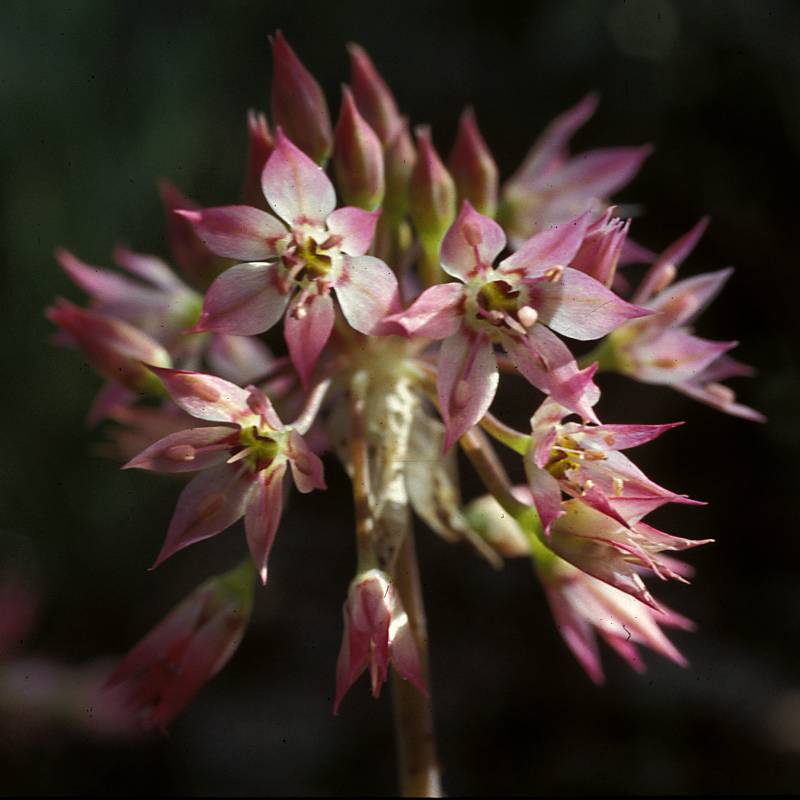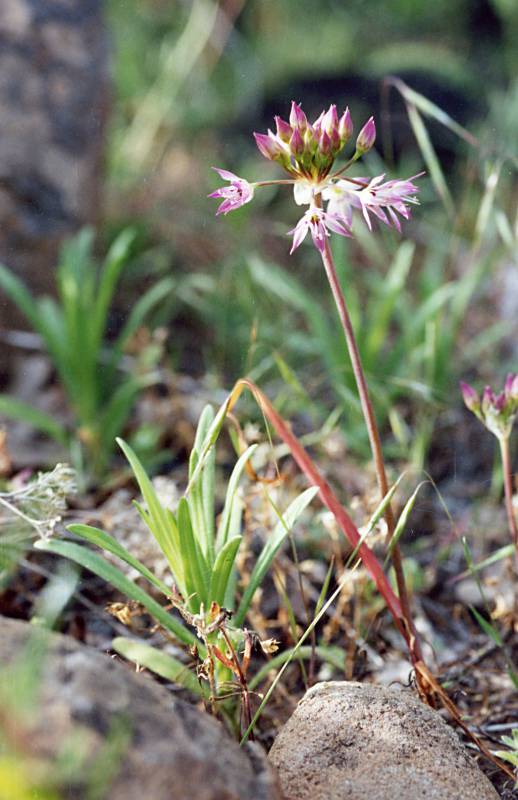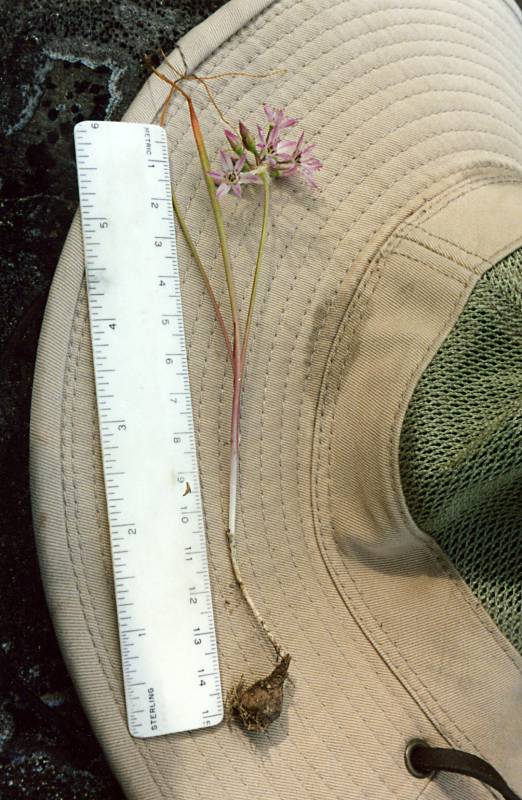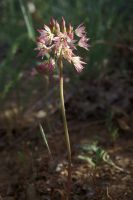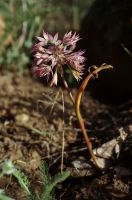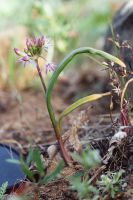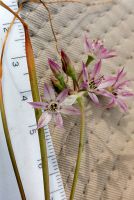Distribution: Occurring east of the Cascades crest where known from Yakima County in Washington; Washington to California, east to Nevada.
Habitat: Dry soils at medium to high elevations.
Flowers: June-July
Origin: Native
Growth Duration: Perennial
Conservation Status: Threatened in Washington (WANHP)
Pollination: Bumblebees, bees, flies, hummingbirds
Scapose perennial herbs from bulbs, the bulbs ovoid, usually producing from the base a cluster of short-stalked bulblets, the outer coats grayish or brownish.
Leaves usually 2, concave-convex, less than 5 mm. broad, about equal to the scape, withering at flowering; scape usually less than 1.5 dm. tall, cylindrical, usually solitary.
Umbel few- to many-flowered, the pedicels up to 4 times the length of the tepals, becoming strongly deflexed in fruit; tepals usually 7-8 mm. long, ovate to narrowly lanceolate, acuminate, entire, purplish to pinkish or white, the tips with a strong keel; stamens 6, shorter than the tepals; stigma capitate.
Capsule 3-celled, 6-seeded, conspicuously crested with 6 flattened processes.
Publication: Proc. Amer. Acad. Arts. 14: 231. 1879.
Allium bidwelliae S. Watson
Allium campanulatum S. Watson var. bidwelliae (S. Watson) Jeps.
PNW Herbaria: Specimen records of Allium campanulatum in the Consortium of Pacific Northwest Herbaria database
WA Flora Checklist: Allium campanulatum checklist entry
OregonFlora: Allium campanulatum information
E-Flora BC: Allium campanulatum atlas page
CalPhotos: Allium campanulatum photos

